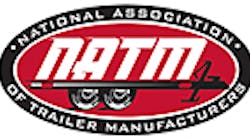ONE of the best things a company can do is assure that it has a robust quality assurance program, according to Phillip K Parson, lead certification instructor for the Society for Protective Coatings and chief operating officer for the Global Inspection Group.
That starts with ISO 9000:2005, which describes fundamentals of quality management systems that form the subject of the ISO 9000 family; and ISO 9001:2008, which sets out the criteria for a quality management system and is the only standard in the family that can be certified to (although this is not a requirement).
In “Selection of Surface Preparation, Coatings and Corrosion Control,” Parson said that “good-quality management systems with parameters help ensure a successful operation.”
That’s particularly important because of the ravages of corrosion.
Companies need to understand the issue, and Parson took the seminar attendees through the various preparation techniques of substrate: abrasive blasting; water jetting; and chemical bath.
Proper preparation methods can be validated by a quality assurance program. You have:
• Inspection: Quality Control (QC).
• Verification: Quality Assurance.
“You must know the standard as specified by the owner/customer and coating manufacturer,” he said. “What is your specification? How do your folks know they are achieving that specification?”
Validation of proper preparation methods comes through abrasive blast cleaning standards, which are rated good, better, or best:
• SSPC-SP5/NACE No. 1 White Metal Blast Cleaning. It will have no defects, no deficiencies, no shadowing. (Best.)
• SSPC-SP10/NACE No. 2 Near White Blast Cleaning. (Better.)
• SSPC-SP6/NACE No. 3 Commercial Blast Cleaning. (Good.)
• SSPC-SP16 Brush-Off Blast Cleaning of Non-Ferrous Metals. (Best.)
Water Jetting Standards:
• SSPC-SP WJ-1/NACE WJ-1 Waterjet Cleaning of Metals-Clean to Bare Substrate. (Best.)
• SSPC-SP WJ-2/NACE WJ-2 Very Thorough Cleaning. (Better.)
• SSPC-SP WJ-3/NACE WJ-3 Thorough Cleaning. (Good.)
Chemical Bath Standard:
• SSPC-SP8 Pickling. (Good.)
Corrosion and the environment
Parson said corrosion is “deterioration of any material due to reaction with the environment in contact with the material that results in loss of the material and its properties—for example, loss of steel.”
“What does the term ‘environment’ mean to a coating or metal with respect to corrosion?” he asked. “It means the physical and chemical conditions they are exposed to, such as salts, temperature, acids, ozone, etcetera. Different environments have different effects on different materials.
“The corrosion cycle goes like this: We mine ore, take it to the smelter or refinery, make the finished product, and as soon as it comes off the line, it’s trying to return back to its natural state. We introduce air, moisture, contaminants, and salts, and the steel is trying to revert back to its original state, so we get back to iron oxide and repeat the cycle.
“Corrosion is a natural process. It’s happening every day, every minute.”
He said dissimilar metals and alloys have different electrode potentials, and when two or more come into contact in an electrolyte, one metal acts as anode and the other as a cathode. The electro-potential difference between the dissimilar metals is the driving force for an accelerated attack on the anode member of the galvanic couple.
“Galvanic corrosion is an electrochemical process in which one metal corrodes preferentially to another when both metals are in electrical contact, in the presence of an electrolyte,” he said.
To prevent galvanic (dissimilar metal) corrosion:
• Electrically insulate the two metals from each other. If they are not in electrical contact, no galvanic couple will occur. This can be achieved by using non-conductive materials between metals of different electro-potential.
• Ensure there is no contact with an electrolyte. This can be done by using water-repellent compounds such as greases, or by coating the metals with an impermeable protective layer, such as a suitable paint, varnish, or plastic.
• Choose metals that have similar electro-potentials. The more closely matched the individual potentials, the lesser the potential difference and hence the lesser the galvanic current. Using the same metal for all construction is the easiest way of matching potentials.
He said coatings are used: to prevent/slow onset of corrosion; to improve durability; and to improve aesthetics.
There are three primary ways coatings act to prevent corrosion on steel:
• Barrier coatings (epoxy).
“There is reduced permeability to moisture and oxygen. Both oxygen and moisture are required for corrosion to occur. No coating is completely impermeable. Pigment selection can be important. The coating must adhere tightly to the substrate with no breaks. If the coating adheres tightly, moisture cannot get close enough to the surface to cause corrosion. Breaks in the coating allow corrosion to begin very quickly.”
• Sacrificial primers (inorganic zinc).
“They must be used as the primer—and need to be in electrical contact with steel. Generally, you need a high loading of zinc powder by weight. Adjacent particles must be in contact for effective protection. Inorganic binders are typically more effective than organic binders.”
• Inhibitive primers (zinc molybdate).
“They must be used as primer coat—and need to be in contact with steel. Red lead, lead oxide, and lead chromate are banned; zinc chromate, strontium chromate, and chromate conversion coating are being phased out. Zinc molybdate is TT-P-645B.”
He recommends talking to manufacturers and explaining to them what type of performance you’re looking for in a coating.
“A coating manufacturers’ laboratory chemist will develop coatings for the performance, durability, service life, and environment in which the coating is expected to perform,” he said. “Following the coating manufacturer’s Product Data Sheet (PDS) is essential for optimum durability and performance of the selected coating. It’s like a recipe card. If you follow it for that particular coating, you will be successful.
“Talk to your paint technical rep. Sales guys sometimes aren’t quite there yet, while the guy who’s been doing it for a while or a technical guy will have probably experienced something like that and you’ll be able to draw from that experience.” ♦











